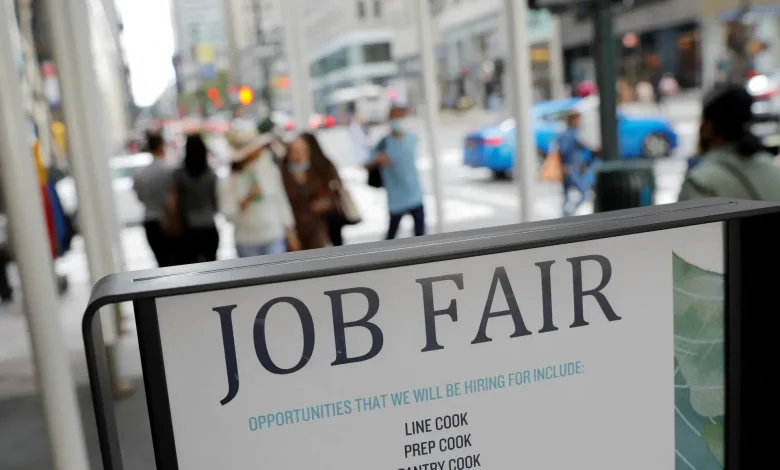US economy adds 119,000 jobs in September as unemployment rate rises

United States job growth accelerated in September despite a cooling job market as the unemployment rate rose.
Nonfarm payrolls grew by 119,000 jobs after a downwardly revised 4,000 drop in August, according to the Bureau of Labor Statistics (BLS) report released on Thursday.
Recommended Stories
list of 4 itemsend of list
The unemployment rate rose to 4.4 percent, up from 4.3 percent in August.
The healthcare sector had the most gains, totalling 43,000 jobs in September. Food and beverage services sectors followed, adding 37,000 jobs, and social assistance employment grew by 14,000.
Other sectors saw little change, including construction, wholesale trade, retail services, as well as professional and business services.
The federal workforce saw a decline of 3,000, marking 97,000 jobs cut from the nation’s largest employer since the beginning of the year. Transportation and warehousing, an industry hit hard by tariffs, also saw declines and shed 25,000 jobs in September.
Average wages grew by 0.2 percent, or 9 cents, to $36.67.
Government shutdown hurdles
The September jobs report was initially slated for release on October 3, but was pushed out because of the US government shutdown. The jobs report typically comes out on the first Friday of each month. Because of the 43-day-long shutdown, the US Labor Department was unable to collect the data needed to calculate the unemployment rate for the month of October.
Nonfarm payrolls for the month of October will be released as part of the November employment report, which is slated to be released on December 16.
Heading into the economic data blackout, the BLS had estimated that about 911,000 fewer jobs were created in the 12 months through March than previously reported. A drop in the number of migrant workers coming into the US in search of work – a trend which started during the final year of former US President Joe Biden’s term and accelerated under President Donald Trump’s administration – has depleted labour supply.
“Today’s delayed report shows troubling signs below the topline number: the underlying labour market remains weak, leaving working Americans with shrinking opportunities and rising insecurity. Month after month, the Trump economy is producing fewer jobs, more instability, and fewer pathways for families trying to get ahead,” Alex Jacquez, chief of policy for the economic think tank the Groundwork Collaborative, said in a statement provided to Al Jazeera.
Economists estimate the economy now only needs to create between 30,000 and 50,000 jobs per month to keep up with growth in the working-age population, down from about 150,000 in 2024.
Behind the stalling growth
The rising popularity of artificial intelligence is also eroding demand for labour, with most of the hits landing on entry-level positions in white collar jobs, and locking recent college graduates out of work. Economists said AI was fueling jobless economic growth.
Others blamed the Trump administration’s trade policy for creating an uncertain economic environment that had hamstrung the ability of businesses, especially small enterprises, to hire.
The US Supreme Court earlier this month heard arguments about the legality of Trump’s import duties, with justices raising doubts about his authority to impose tariffs under the 1977 International Emergency Economic Powers Act.
Despite payrolls remaining positive, some sectors and industries are shedding jobs. Some economists believed the September employment report could still influence the Federal Reserve’s December 9-10 policy meeting on interest rate decisions.
US central bank officials will not have November’s report in hand at that meeting, as the release date has been pushed to December 16 from December 5. Minutes of the Fed’s October 28-29 meeting published on Wednesday showed many policymakers cautioned that lowering borrowing costs further could risk undermining the fight to quell inflation.





